Cum Generează Recenziile Online Lead-uri Pentru Afacerile Locale: Analiză de Impact Completă
O analiză cuprinzătoare a modului în care recenziile online influențează generarea de lead-uri, ratele de conversie, costurile de achiziție a clienților și veniturile pentru afacerile locale.

Cum Generează Recenziile Online Lead-uri pentru Afacerile Locale: O Analiză de Impact
Recenziile online au evoluat de la simple opinii ale clienților la un motor puternic pentru succesul afacerilor locale. Pentru antreprenori și specialiști în marketing, înțelegerea modului în care recenziile influențează generarea de lead-uri nu mai este opțională, ci esențială pentru o creștere sustenabilă. Această analiză examinează efectele măsurabile ale recenziilor online asupra ratelor de conversie, costurilor de achiziție a clienților și performanței generale a veniturilor.
Starea Actuală a Comportamentului Consumatorilor
Cele mai recente cercetări din studiul BrightLocal (2025) relevă că atitudinea consumatorilor față de recenzii continuă să evolueze, cu implicații majore pentru afacerile locale. Datele arată că 96% dintre consumatori citesc recenzii online pentru afaceri locale, în timp ce 81% folosesc în mod specific Google pentru acest lucru. Aceasta reprezintă o oportunitate masivă pentru companii de a influența deciziile de cumpărare printr-un management strategic al recenziilor.
Totuși, apare o tendință surprinzătoare în ceea ce privește încrederea. Dacă în 2020, 79% dintre consumatori aveau la fel de multă încredere în recenzii ca în recomandările personale, această cifră a scăzut la doar 42% în 2025. Schimbarea sugerează că publicul devine mai exigent și mai obiectiv, analizând detalii atât din recenziile pozitive, cât și din cele negative, pentru a-și forma propria opinie.
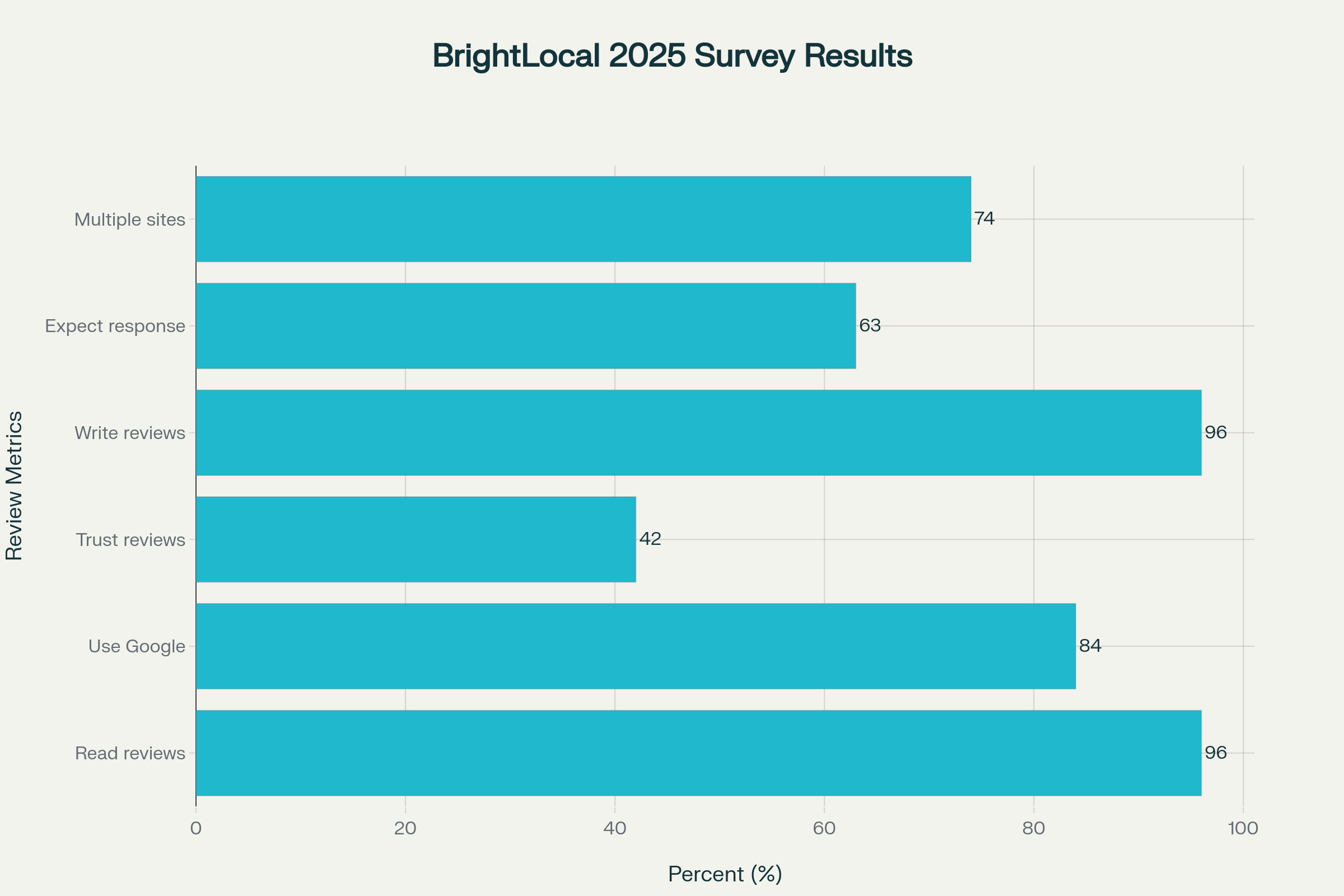
Studiul mai arată că 96% dintre consumatori sunt dispuși să scrie recenzii, dar numai 63% se așteaptă la un răspuns în decurs de o săptămână. Acest decalaj creează o oportunitate semnificativă pentru afacerile care interacționează eficient cu comunitatea lor.
Impactul Asupra Ratelor de Conversie: Punctul Optim al Ratingului
Cercetările demonstrează constant o corelație directă între ratingul în stele și ratele de conversie, dar relația nu este întotdeauna liniară. Analiza datelor de conversie de la mii de afaceri locale arată că ratele de conversie ating un vârf la 4.9 stele, înainte de a scădea ușor la 5.0 stele.
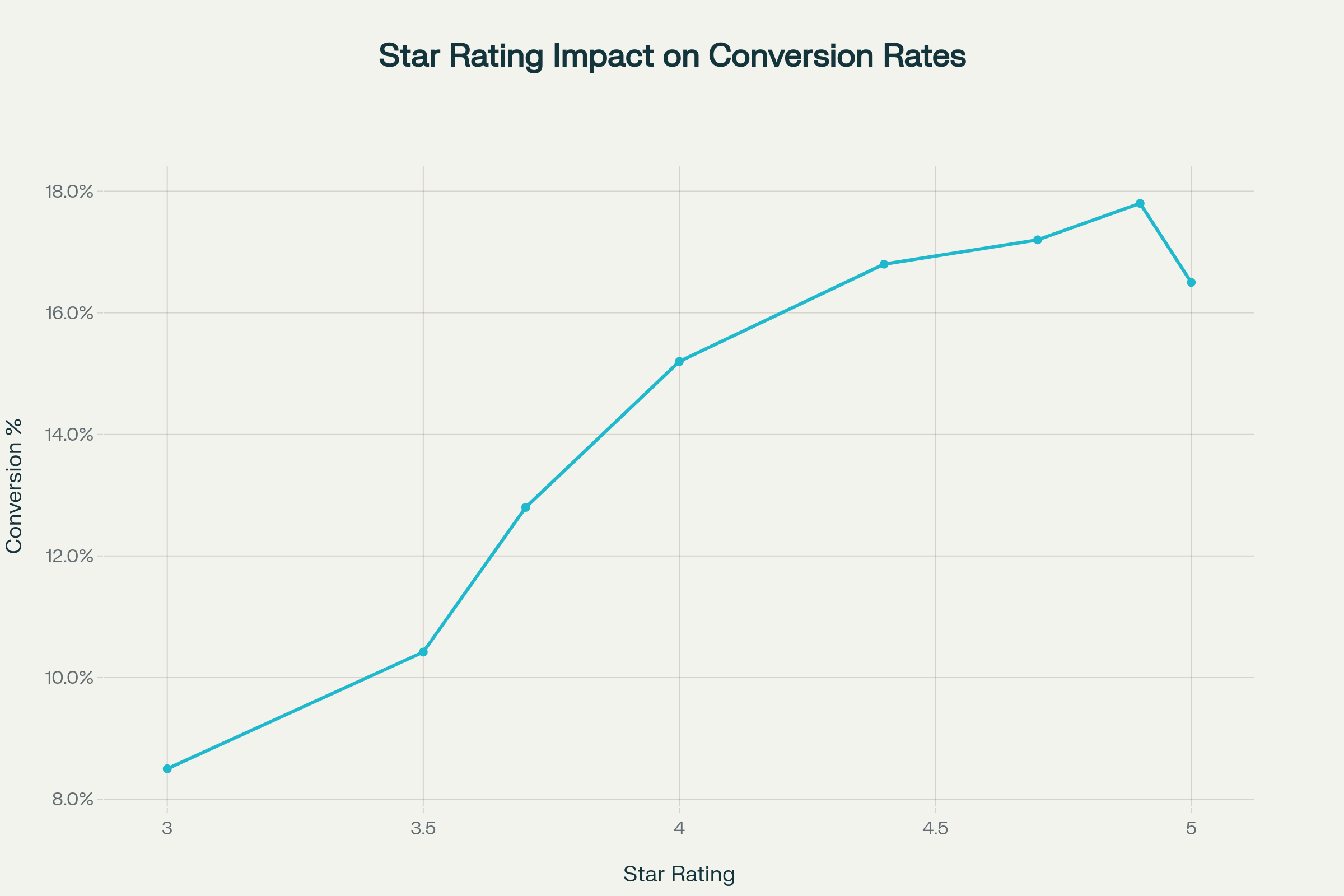
Datele indică faptul că afacerile care ating un rating de 3.7 stele înregistrează o creștere spectaculoasă a ratei de conversie, de 120%, comparativ cu cele de 3.5 stele. Acesta reprezintă un prag critic, la care încrederea consumatorilor crește semnificativ. Zona optimă de performanță pare a fi între 4.4 și 4.9 stele.
Interesant este că afacerile cu rating perfect de 5 stele au adesea o performanță mai slabă decât cele cu 4.7-4.9 stele. Fenomenul apare deoarece consumatorii pot percepe ratingurile perfecte ca fiind mai puțin autentice. O ușoară imperfecțiune, precum un rating de 4.8, poate spori credibilitatea și genera conversii mai mari.
Costurile de Achiziție a Clienților: Impactul Ascuns al Recenziilor Slabe
Unul dintre cele mai semnificative, dar adesea trecute cu vederea, efecte ale recenziilor online se resimte în costurile de achiziție a clienților (CAC). Ratingurile slabe creează un efect compus care crește cheltuielile de marketing, reducând simultan eficiența acestora.
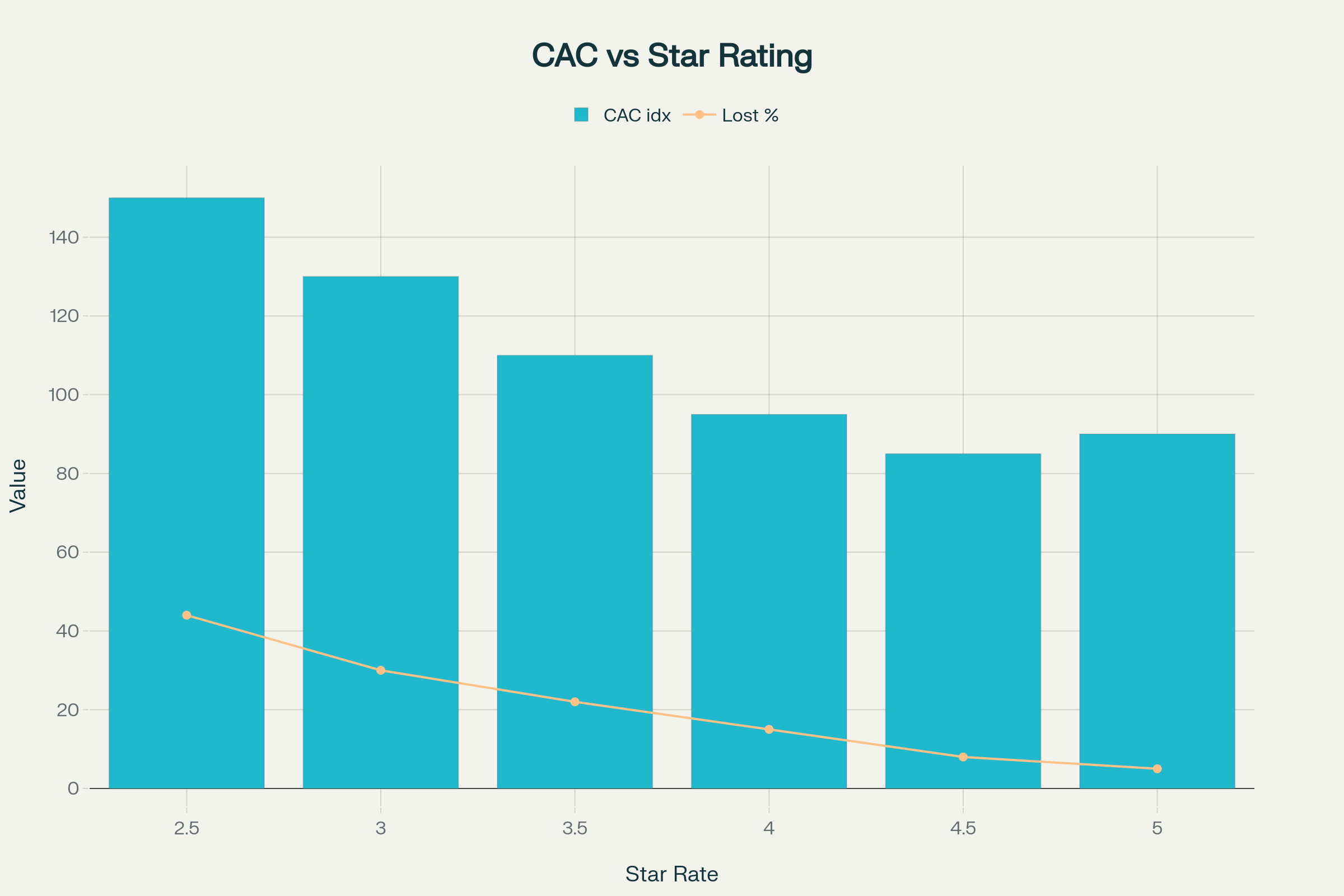
Cercetările arată că afacerile cu ratinguri scăzute se confruntă cu costuri de achiziție substanțial mai mari. Companiile cu ratinguri sub 3.5 stele pot pierde până la 22% dintre clienții potențiali din cauza unei singure recenzii negative vizibile pe prima pagină a rezultatelor. Procentul crește la 44% atunci când sunt vizibile mai multe recenzii negative.
Din punct de vedere al costurilor, acest lucru înseamnă că afacerile cu o reputație online slabă trebuie să:
- Investească mai mult în publicitate plătită pentru a compensa ratele de clic mai mici.
- Aloce resurse suplimentare pentru remarketing pentru a depăși ezitarea inițială.
- Cheltuie mai mult pentru a licita pe aceleași cuvinte cheie ca și concurența.
Un studiu Trustpilot a constatat că, între 2013 și 2022, costurile medii de achiziție a clienților au crescut cu 222%. Afacerile cu profiluri de recenzii solide pot reduce semnificativ aceste costuri, folosind dovada socială pentru a accelera procesul decizional.
Impactul Asupra Veniturilor: Rentabilitatea Măsurabilă a Investiției în Recenzii
Impactul recenziilor asupra veniturilor depășește simpla îmbunătățire a conversiilor. Multiple studii au documentat beneficii financiare substanțiale pentru afacerile care își gestionează activ reputația online.
Rezultatele Studiului Harvard Business Review
Un studiu al Harvard Business School oferă unele dintre cele mai convingătoare dovezi. Cercetarea a constatat că o creștere de o stea în ratingul Yelp duce la o creștere a veniturilor de 5-9%.
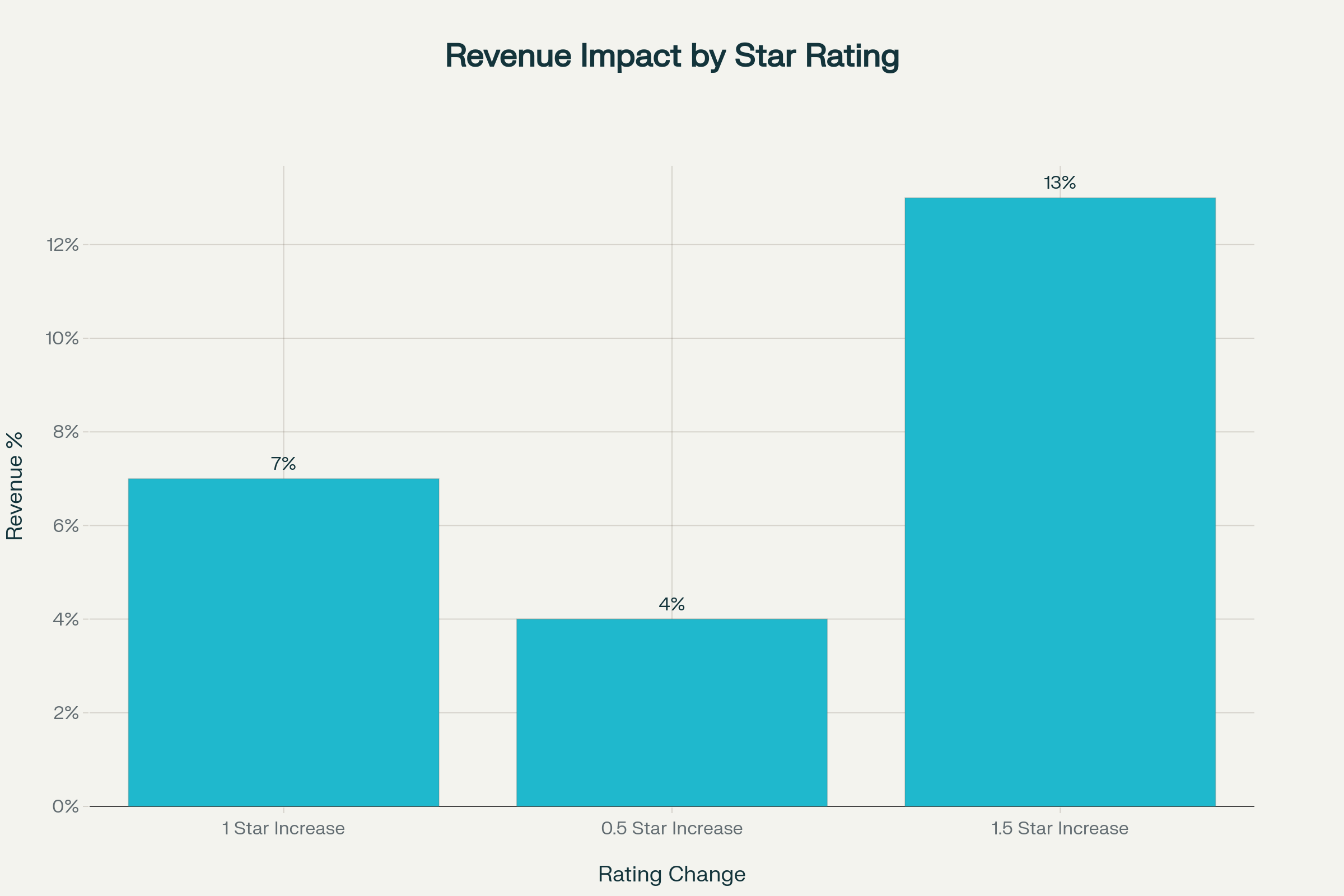
Aceste cifre au un impact real semnificativ. De exemplu, un restaurant cu venituri anuale de 500.000 € ar putea câștiga între 25.000 și 45.000 € în plus dintr-o singură stea adăugată la rating.
Numărul de Recenzii vs. Performanța Veniturilor
Pe lângă rating, și volumul recenziilor joacă un rol la fel de important. O analiză a peste 200.000 de afaceri arată că firmele cu mai mult de 82 de recenzii în total câștigă cu 54% mai mult venit anual decât media.
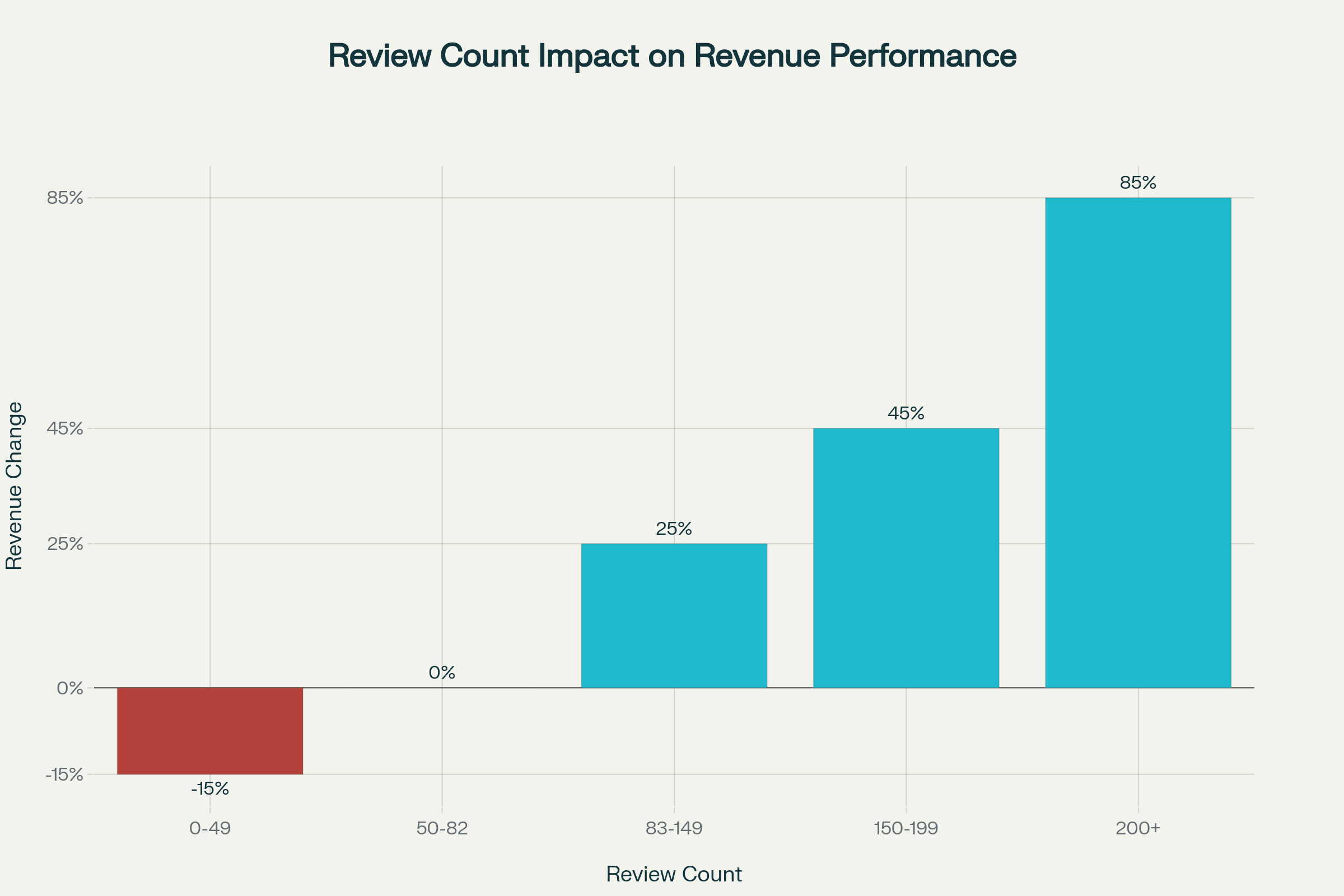
Datele arată o progresie clară:
- Afacerile cu 0-49 recenzii câștigă cu 15% mai puțin decât media.
- Cele cu 83-149 recenzii câștigă cu 25% mai mult.
- Cele cu 200+ recenzii câștigă cu 85% mai mult.
Rata de Răspuns ca Multiplicator de Venituri
Răspunsul la recenzii adaugă un alt strat de multiplicare a veniturilor. Studiile arată că firmele care răspund la cel puțin 25% dintre recenzii înregistrează, în medie, venituri cu 35% mai mari.
Implicații Strategice pentru Antreprenori
Acțiuni Imediate
- Auditează-ți Profilul de Recenzii: Evaluează-ți ratingurile pe toate platformele și identifică diferențele față de intervalul optim de 4.4-4.9 stele.
- Implementează Colectarea Sistematică de Recenzii: Cu 96% dintre consumatori dispuși să lase recenzii, principala barieră este adesea simpla lipsă a unei solicitări.
- Prioritizează Răspunsul la Recenzii: Concentrează-te mai întâi pe recenziile negative, deoarece acestea au cel mai mare impact asupra conversiilor.
- Diversifică Platformele: Deși Google domină, 74% dintre consumatori folosesc mai multe site-uri de recenzii.
Strategia pe Termen Lung
Datele demonstrează clar că managementul recenziilor ar trebui tratat ca o activitate generatoare de venituri.
- Alocă Buget de Marketing: Rentabilitatea investiției în îmbunătățirea recenziilor depășește adesea canalele tradiționale de publicitate.
- Urmărește Recenziile ca Indicatori Cheie de Performanță (KPI): Monitorizează ratingul, volumul și rata de răspuns.
- Integrează Recenziile în Procesul de Vânzare: Folosește recenziile pozitive în materialele de marketing.
Concluzie
Dovezile sunt clare: recenziile online au un impact direct și măsurabil asupra generării de lead-uri pentru afacerile locale, prin îmbunătățirea ratelor de conversie, reducerea costurilor de achiziție și creșterea veniturilor. Afacerile care ignoră managementul recenziilor pierd oportunități financiare substanțiale.
Pentru antreprenori și marketeri, calea de urmat este evidentă. Managementul recenziilor nu este doar o sarcină de serviciu clienți, ci o componentă centrală a strategiei de optimizare a veniturilor.